Falls Links
April Falls Edition | Issue 2
Welcome to our newsletter
April Falls Day® is an annual campaign to raise awareness about the impact of falls and to promote the latest best practice fall prevention strategies. The overall campaign goal is to help improve the safety of those at risk of falling.
Following a year that has encouraged people to physically isolate, this year’s theme is Safe Activity For Everybody, which encourages older Australians to get physically active and reconnect with their social networks and community while highlighting the importance of participating in these activities safely.
Every move counts. Step safely towards better health today.
UPCOMING EVENTS
NSW Fall Prevention & Healthy Ageing Network Annual Virtual Forum
Friday 30th April 9.30am - 3.00pm AEST
The NSW Fall Prevention and Healthy Ageing Network is holding its annual forum on the 30th April 2021 as a virtual meeting. Rounding out April Falls month with the theme Safe Activity for Everybody this forum will provide an overview of recent fall prevention research, legislative and policy changes in residential aged care and fall prevention in hospitals.
Plenary Speakers
- Pam Albany Guest Lecture: Dr Daina Sturnieks, School of Medical Sciences, UNSW, Falls Balance and Injury Research Centre, NeuRA
- Professor Chris Todd, Director of the NIHR Older People & Frailty Policy Research Unit, Professor of Primary Care and Community Health, School of Health Sciences, University of Manchester
- Professor Stephen Lord, Senior Principal Research Fellow; Centre Director, Falls Balance
and Injury Research Centre, NeuRA - Professor Kathy Eagar, Director of Australian Health Services Research Institute, University of Wollongong
- Professor Anne-Marie Hill, Faculty of Health Sciences, Curtin University
- Associate Professor Kate Laver, ARC Discovery Early Career Research Fellow, College of Medicine and Public Health, Flinders University
Afternoon concurrent workshops
- Telehealth - A practical workshop on how to setup and deliver exercise via telehealth, followed by a panel and Q&A
This workshop on telehealth aims to provide a practical overview of how to set up a telehealth exercise program and will include key information on the benefits, enablers and barriers that telehealth can bring. This will be followed by a demonstration of running an exercise class via telehealth and will provide examples of exercises that can be done, how to manage and check on your clients and ways to progress you exercise programs.
- The CEC Comprehensive Care Model – Minimising harm
The Clinical Excellence Commission’s safety model for Comprehensive Care aims to minimise harm to ensure safe, reliable and high value care for older people. This model builds on the Falls in hospital initiative, with a broader focus on the person and the safety system required to help drive sustained improvement. It aligns with the Australian Commission on Safety Quality Health Care National Standard 5: Comprehensive Care – minimising harm.
|
|
April Falls Month 2021 - Safe Activity for Everybody
April Falls Month is well underway and Local Health Districts have been busy promoting exercise and fall prevention across all their sites.
Southern NSW Local Health District. Jackie Jackson, Manager Aboriginal Health talks to Niccola Follett, Manager Clinical Improvement about April Falls Month.

In Tumut on 13 April, April Falls Day celebration combined with the Seniors Week 2021.Volunteers flanked with their class participants ran a group exercise demonstration at a local park. Snowy Valleys Council Mayor, Tumut Cluster Manager for MLHD and Director of Public Health attended along with local residents, council staff and other organisations.
South Eastern NSW Local Health District put together 1000 good bags for people visiting hospitals around the district. These were filled with information on the importance of staying active, eating well and socialising along with a 30-day challenge to try and drive behaviour change. (Right)
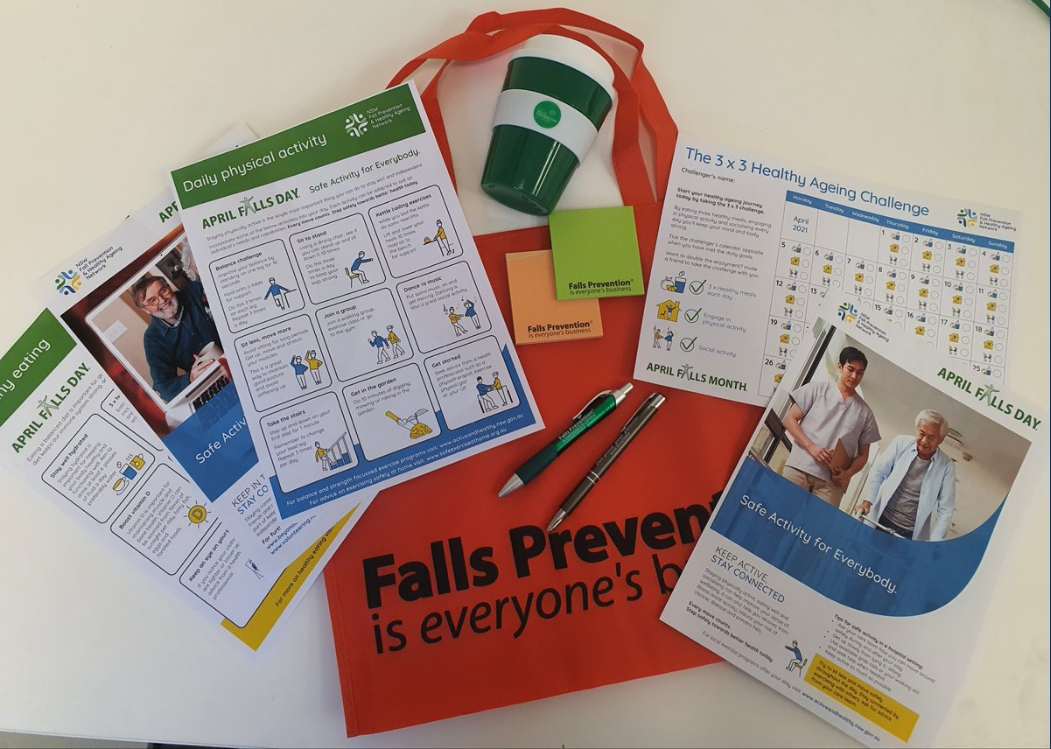
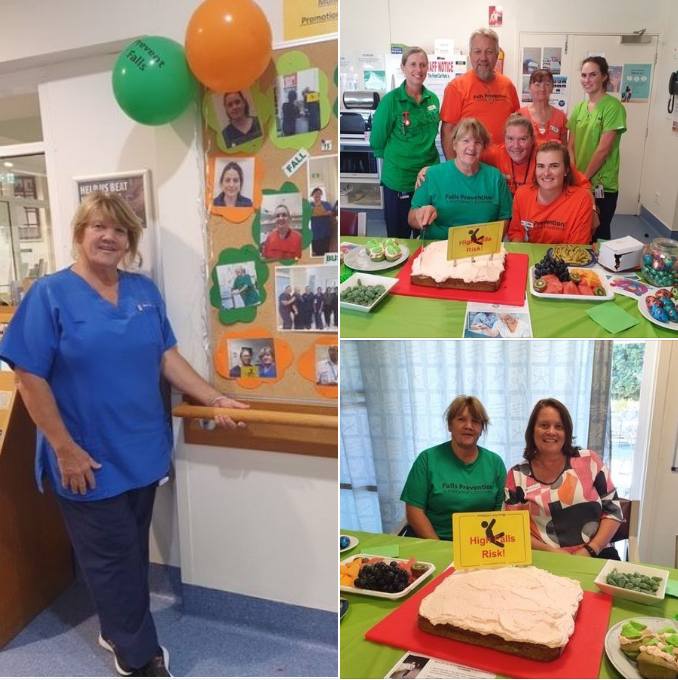
Western NSW Local Health District, Team Gilgandra raising awareness about falls and the importance of fall prevention. The team had a delicious morning tea and talked about how falls are everyone's business.
(Left)
Western NSW Local Health District also promoting their new Stepping On programs at Canowindra and Eugowra. (Below)
The Network has developed resources for you to print and share during your April Fall Month activities. Take the 3x3 challenge with your friends, colleagues or clients to promote healthy ageing for all.
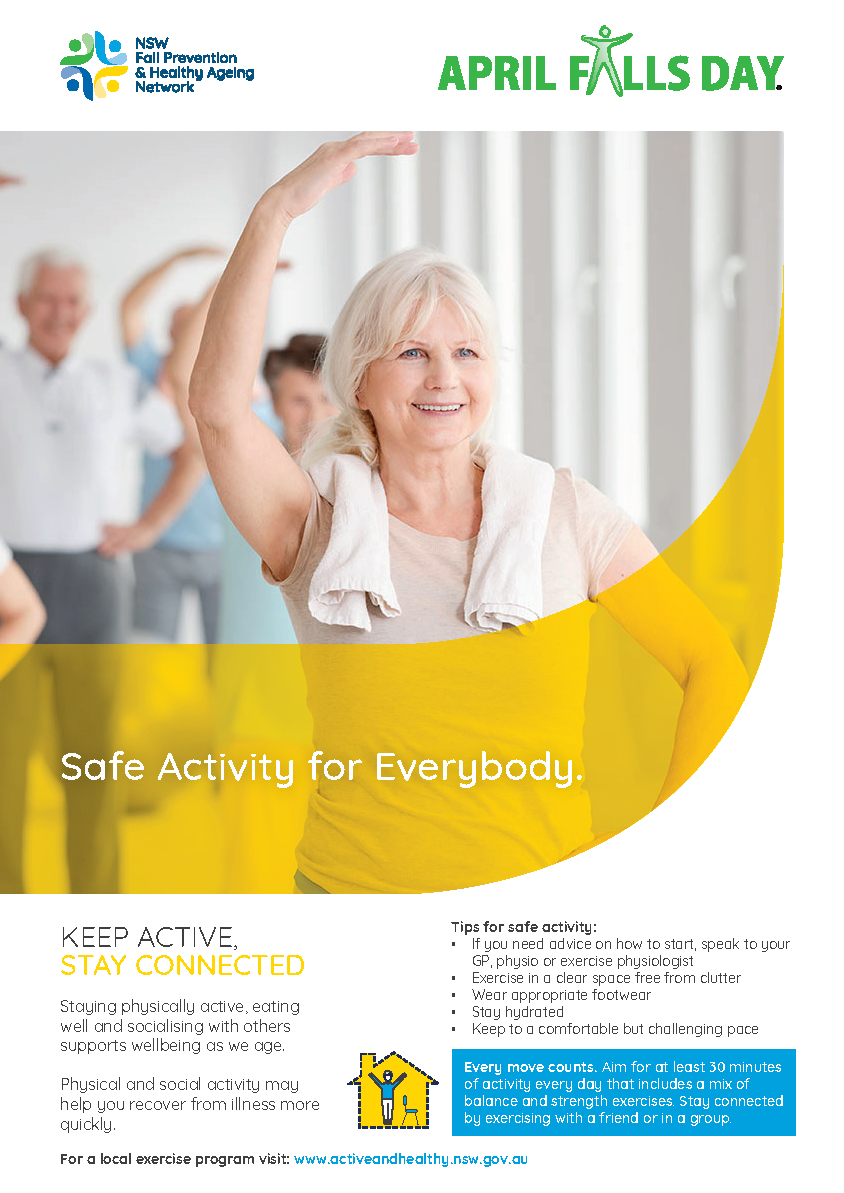
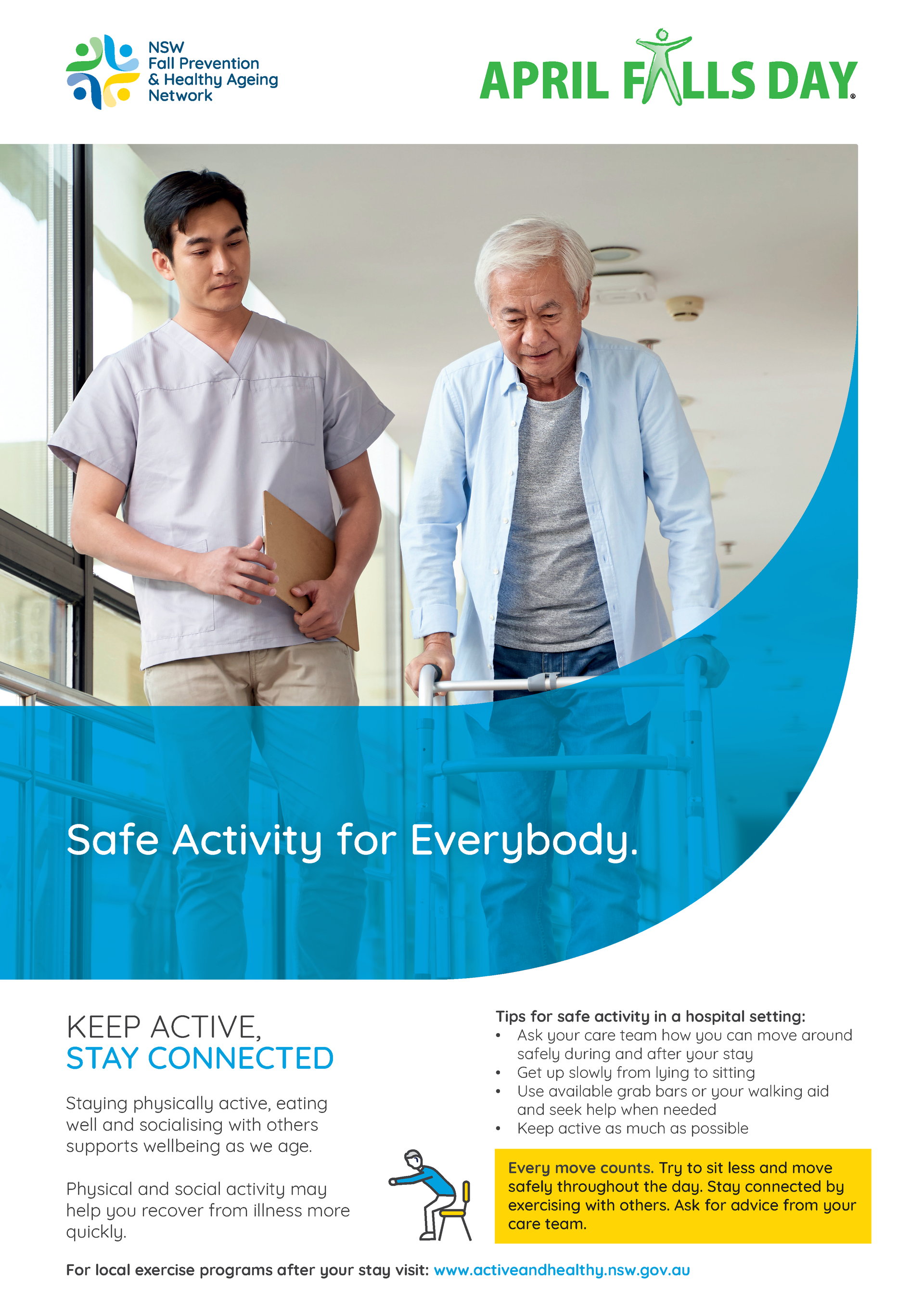
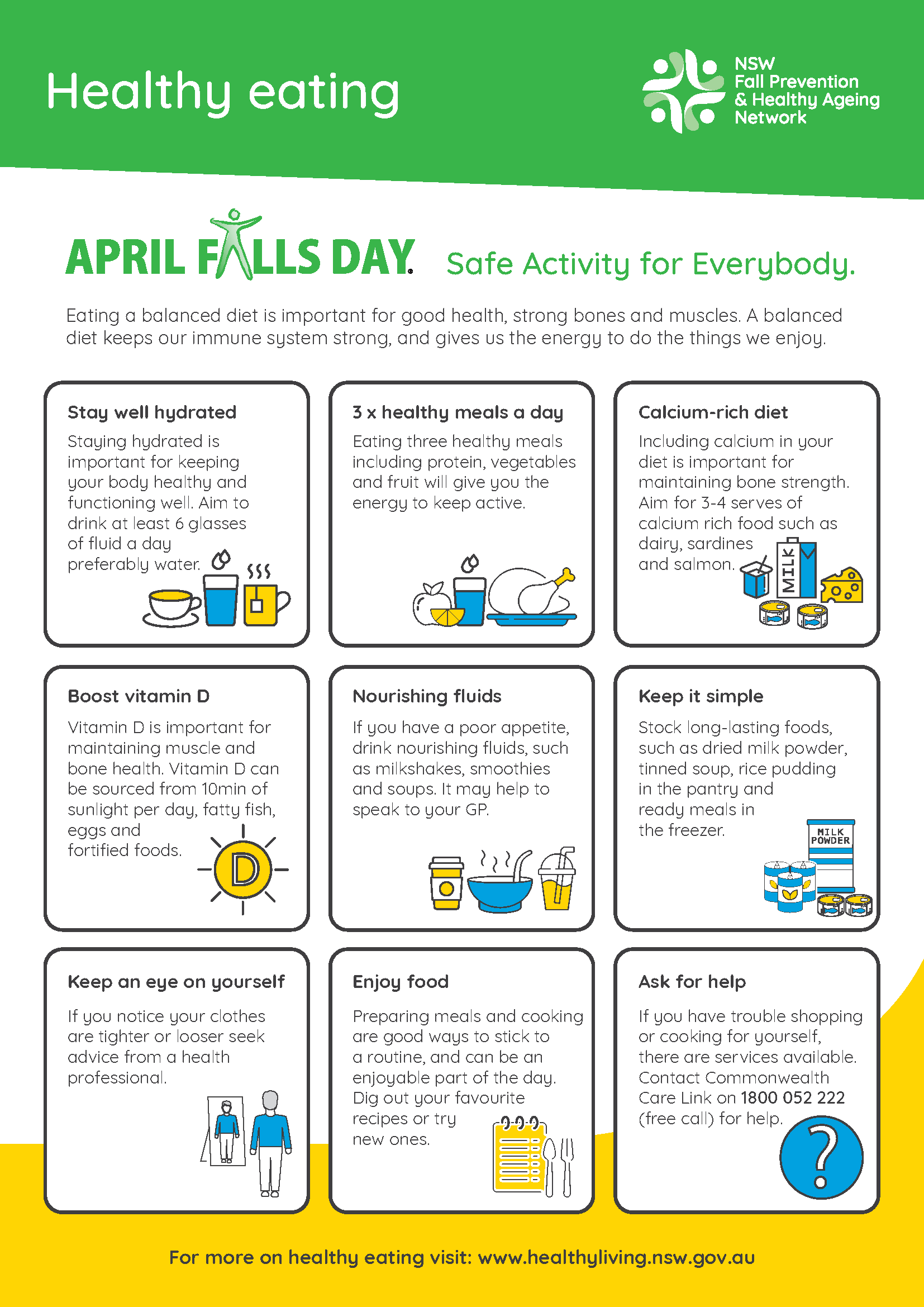
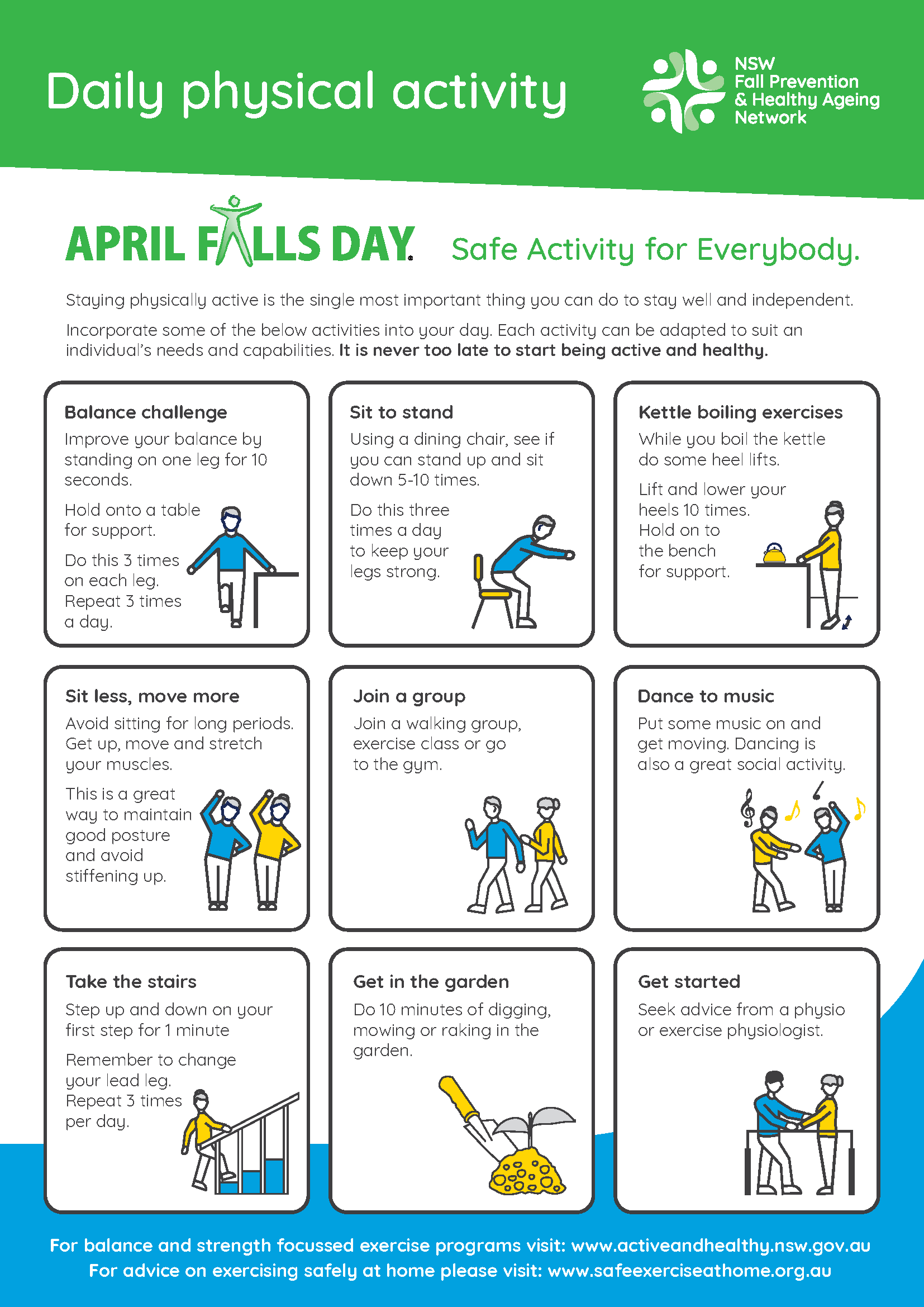
|
|
PROGRAM HIGHLIGHT
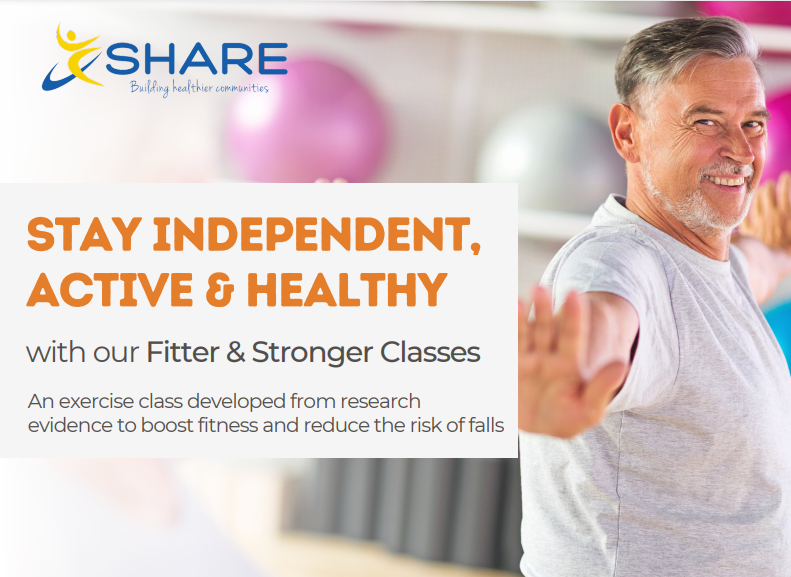
SHARE is a Not For Profit organisation providing exercise classes to people over 50 in the community since 1985. Their Fitter and Stronger classes are designed to improve your strength, fitness, flexibility and balance. A good way to challenge your total body fitness while you are having fun, includes a warm-up, aerobics, strength exercises using resistance equipment and a cool-down with stretching and relaxation.
Classes are now available in multiple locations including Ashfield, Burwood, Concord West, Earlwood, East Lakes,
Glebe, Kogarah, Mascot, Peakhust, Oatley, Redfern and Rockdale.
For more information visit their website
|
|
RESEARCH UPDATE
Environmental and behavioural interventions for reducing physical activity limitation and preventing falls in older people with visual impairment
Jian-Yu E, Li T, McInally L, Thomson K, Shahani U, Gray L, Howe TE, Skelton DA. Cochrane Database of Systematic Reviews. 2020(9).
Background
Impairment of vision is associated with a decrease in activities of daily living. Avoidance of physical activity in older adults with visual impairment can lead to functional decline and is an important risk factor for falls. The rate of falls and fractures is higher in older people with visual impairment than in age‐matched visually normal older people. Possible interventions to reduce activity restriction and prevent falls include environmental and behavioral interventions.
Objectives
We aimed to assess the effectiveness and safety of environmental and behavioral interventions in reducing physical activity limitation, preventing falls and improving quality of life amongst visually impaired older people.
Main results
We included six RCTs (686 participants) conducted in five countries (Australia, Hungary, New Zealand, UK, US) with follow‐up periods ranging from two to 12 months. Participants in these trials included older adults (mean age 80 years) and were mostly female (69%), with visual impairments of varying severity and underlying causes. Participants mostly lived in their homes and were physically independent. We classified all trials as having high risk of bias for masking of participants, and three trials as having high or unclear risk of bias for all other domains. The included trials evaluated various intervention strategies (e.g. an exercise program versus home safety modifications). Heterogeneity of study characteristics, including interventions and outcomes, (e.g. different fall measures), precluded any meta‐analysis.
Two trials compared the home safety modification by occupational therapists versus social/home visits. One trial (28 participants) reported physical activity at six months and showed no evidence of a difference in mean estimates between groups (step counts: mean difference (MD) = 321, 95% confidence interval (CI) ‐1981 to 2623; average walking time (minutes): MD 1.70, 95% CI ‐24.03 to 27.43; telephone questionnaire for self‐reported physical activity: MD ‐3.68 scores, 95% CI ‐20.6 to 13.24; low‐certainty of evidence for each outcome). Two trials reported the proportion of participants who fell at six months (risk ratio (RR) 0.76, 95% CI 0.38 to 1.51; 28 participants) and 12 months (RR 0.59, 95% CI 0.43 to 0.80, 196 participants) with low‐certainty of evidence for each outcome. One trial (28 participants) reported fear of falling at six months, using the Short Falls Efficacy Scale‐International, and found no evidence of a difference in mean estimates between groups (MD 2.55 scores, 95% CI ‐0.51 to 5.61; low‐certainty of evidence). This trial also reported quality of life at six months using 12‐Item Short Form Health Survey, and showed no evidence of a difference in mean estimates between groups (MD ‐3.14 scores, 95% CI ‐10.86 to 4.58; low‐certainty of evidence).
Five trials compared a behavioral intervention (exercise) versus usual activity or social/home visits. One trial (59 participants) assessed self‐reported physical activity at six months and showed no evidence of a difference between groups (MD 9.10 scores, 95% CI ‐13.85 to 32.5; low‐certainty of evidence). Three trials investigated different fall measures at six or 12 months, and found no evidence of a difference in effect estimates (RRs for proportion of fallers ranged from 0.54 (95% CI 0.29 to 1.01; 41 participants); to 0.93 (95% CI 0.61 to 1.39; 120 participants); low‐certainty of evidence for each outcome). Three trials assessed the fear of falling using Short Falls Efficacy Scale‐International or the Illinois Fear of Falling Measure from two to 12 months, and found no evidence of a difference in mean estimates between groups (the estimates ranged from ‐0.88 score (95% CI ‐2.72 to 0.96, 114 participants) to 1.00 score (95% CI ‐0.13 to 2.13; 59 participants); low‐certainty of evidence). One trial (59 participants) assessed the European Quality of Life scale at six months (MD ‐0.15 score, 95% CI ‐0.29 to ‐0.01), and found no evidence of a clinical difference between groups (low‐certainty of evidence).
Authors' conclusions
There is no evidence of effect for most of the environmental or behavioral interventions studied for reducing physical activity limitation and preventing falls in visually impaired older people. The certainty of evidence is generally low due to poor methodological quality and heterogeneous outcome measurements.
Researchers should form a consensus to adopt standard ways of measuring physical activity and falls reliably in older people with visual impairments. Fall prevention trials should plan to use objectively measured or self‐reported physical activity as outcome measures of reduced activity limitation. Future research should evaluate the acceptability and applicability of interventions, and use validated questionnaires to assess the adherence to rehabilitative strategies and performance during activities of daily living.
|
|
The TANGO study: TAperiNG Opioids in older adults with low back pain, and hip or knee osteoarthritis
What is this study about?
Researchers from the University of Sydney, led by Prof Manuela Ferreira, are conducting a study on the development of leaflets to help older people with musculoskeletal pain reduce their use of opioid medications. We are looking for participants to provide their feedback on the design and content of the two leaflets.
What will the study involve for me?
Provide feedback on the leaflets via an online survey. It will take approximately 30 minutes to complete the feedback survey and will be used to improve the leaflets.
Who can take part in the study?
We are looking for participants who:
- Aged 65 or older
- Currently experiencing low back pain, or have a diagnosis of hip or knee osteoarthritis by a medical practitioner
- Are fluent in English
- Have current internet access
- Do not have a health care professional background.
Or, we are looking for people who provide unpaid (non-professional) care for someone who meets the criteria above. You can take part in the study regardless of whether or not you have used opioid medications before.
What if I would like further information about the study?
If you would like to know more at any stage during the study, please visit the study website https://ibjr.sydney.edu.au/volunteer/tango/ or feel free to email: joanna.prior@sydney.edu.au
|
|
ABOUT US
Our vision is to lead the way in fall prevention and other healthy ageing initiatives by harnessing expert knowledge and being collaborative in all we do.
We work closely with researchers, policy makers, health practitioners and community service providers in the development and promotion of healthy ageing services and programs with a focus on preventing falls and fall-related injury.
Our purpose is to support practitioners to improve the lives of older Australians through healthy ageing initiatives with a focus on preventing falls and fall-related injuries.
SHARE YOUR NEWS
Do you have any news on Falls Prevention or healthy ageing that you want to share with others on the network, or report on a project that is happening in your area. We also welcome suggestions for articles and information you would like to see in this newsletter. Send your news and suggestions to: fallsnetwork@neura.edu.au
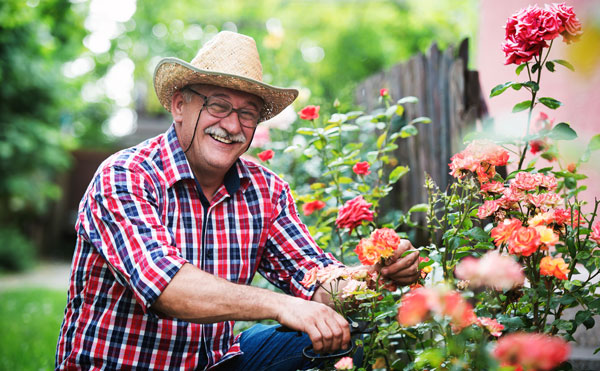

Contact Us:
Telephone +61 2 9399 1063
Email fallsnetwork@neura.edu.au
Our mailing address is:
NSW Falls Prevention Network
Neuroscience Research Australia
PO Box 1165
Randwick NSW 2031
Copyright © NSW Falls Prevention and Healthy Ageing Network
|
|
